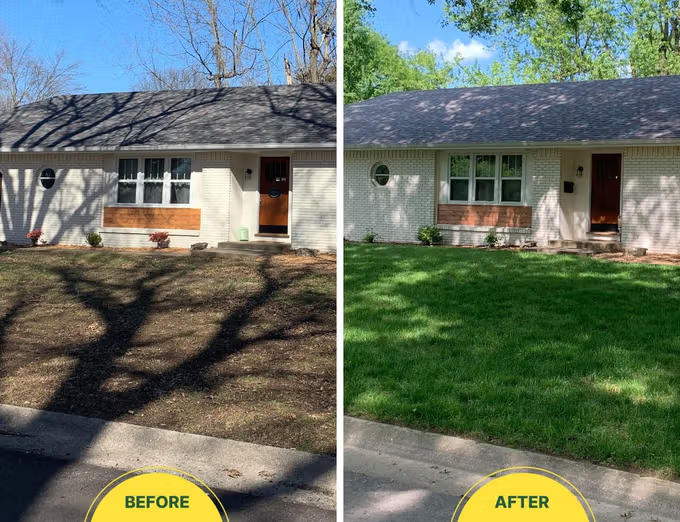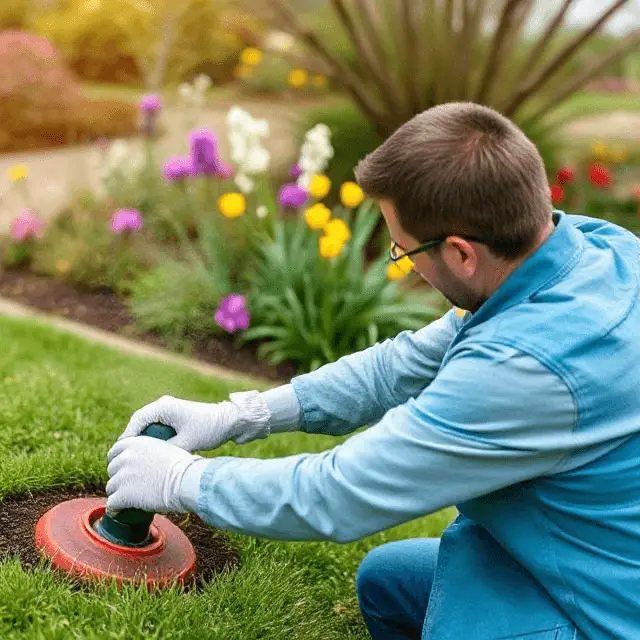What Is the Best Feed for Lawns?
Last Updated on March 26, 2025 by Duncan
With so many different types of lawn feed available, you must be wondering which is the best feed for your lawn.
Like other types of lawns, your grass is likely continually walked on, played on, and worn down. Using the appropriate lawn feed/fertilizer at the proper time will help your lawn recover lost nutrients while keeping weeds and moss at bay. It will also help your lawn recover from the winter cold.
The ideal feed to use on your lawn depends on its condition. The options that you have include:
Product to feed your lawn and kill weed
Pick a weed and feed product if you want a single solution that will feed your lawn while simultaneously killing weeds and moss. You should apply this from March to September.
This product’s uniqueness is that it contains nitrogen and potassium, resulting in lush green lawns that are visible 7 days after treatment. It also destroys grass weeds in 3-5 weeks and moss in just 2 weeks.
If moss is your lawn’s biggest problem, choose a product containing nitrogen to support healthy development and iron sulfate, which helps to green the grass and kill moss. You should use this product anytime between April and September.
Seasonal lawn feeds
Spring and summer lawn feeds, are heavy in nitrogen, which promotes healthy green growth. You can apply this slow-release feed anytime between March and September, promoting robust root development and consistent lawn growth throughout the growing season.
Autumn lawn feeds are slow-release formulations high in potassium and phosphates. These nutrients promote root growth and harden leaf blades to help them withstand winter conditions.
They contain less nitrogen than spring or summer feeds to avoid encouraging excessive leaf growth that frosts could damage.
You can use the product anytime between September and November. In addition to encouraging root development and hardening the grass for winter, it contains iron sulfate, which kills moss.
Fast-acting lawn feeds
Have a backyard party planned, but your grass isn’t ideal? Choose a fast-acting lawn feed that produces effects within 24 hours and keeps your grass healthy and green for up to 6 weeks.
You can connect the spray bottle directly to your hosepipe, allowing you to feed and water the grass simultaneously. It’s also available in granular form, which is perfect for larger lawns. You can apply it anytime between March and September.
If you don’t have much time to care for your lawn, go with feed that comes in pre-measured sachets that you can easily apply to a watering can or feeder. It is high in nitrogen, potash, phosphates, and iron, which promote thick, robust growth and strong roots. Your grass will begin to green in about five days.
Natural lawn feeds
If you are looking for an organic lawn-feeding solution that encourages lawn growth while discouraging weed growth, go for a pesticide-free solution.
It has a unique combination of 100% plant-based nutrients, supporting robust lawn growth while also fighting moss and reducing the emergence of new weeds. It is best used in the spring and again in late summer.
How to feed your lawn
When it comes to feeding your lawn, you have two options: granulated or liquid lawn feed. You can apply granulated lawn feed with a lawn spreader. Check the box for quantity instructions, and do not apply more feed than recommended since this will burn the grass.
Generally, you should apply fertilizer when the weather is pleasant, the soil is damp, but the grass is dry. After adding the feed, make sure to water it thoroughly.
Once the product has dried, now allow children and pets on the lawn. Granulated feeds are typically a less expensive choice for vast gardens than liquid feeds.
Granular feeds are easier to apply to bigger lawns and come in various nutrient sources.
Natural/organic: naturally slow-releasing fertilizer, generally lowers nutrient levels and encourages balanced growth with a little and often nutrient release.
Mineral fertilizer is a quick-acting feed that promotes quick reaction and strong growth. It can also be coupled with active compounds that reduce weeds and mosses.
Liquid feeds are perfect for small gardens. They can be applied using a watering can with a sprinkler bar. These feeds typically generate faster results than granulated feeds.
Follow the dilution rate instructions carefully since using an overly concentrated feed might cause the grass to burn. As with granular feeds, keep youngsters and dogs off the grass until it has dried.
FAQs
When is the ideal time of year to feed your lawn?
Spring and autumn are the most crucial periods for fertilizing your grass. A nitrogen-rich spring lawn feed will promote the growth of healthy, lush green grass in preparation for the summer season. An autumn lawn feeds heavily in potash, promotes strong root growth, and hardens the grass for winter.
What is the distinction between spring and fall lawn feeds?
Spring lawn feeds are heavy in nitrogen, promoting lush green lawn growth. Autumn lawn feeds are strong in potassium and phosphates, which promote root growth and harden the grass for the winter. They contain less nitrogen than spring feeds to avoid promoting frost-sensitive leaf development.
What will happen if I overfeed my lawn?
It is not a good idea to overfeed your lawn by applying fertilizer too frequently or when the lawn does not require it. This might cause the grass to produce a lot of leaf growth at the expense of forming good roots, eventually leading to weak grass susceptible to disease and weeds.
What are the signals that your lawn needs to be fed?
Thin, uneven lawns with pale yellowish or brown grass indicate that you should feed your lawn. Lawns that require feeding are also more likely to have weeds and moss than healthy lawns because weeds will take over any bare spots or areas where the grass is not growing well.


